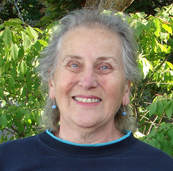 Do your feet sometimes smell rotten? Do you wish you could toss out your shoes and start with a new pair? We make jokes about smelly feet, but smell and feet have a very different relationship among some insects. Take butterflies. Have you ever watched a butterfly flit over a plant, gently touch its feet to a leaf, and then fly on to the next leaf? That butterfly isn’t being picky about where to land. It’s hunting for the right kind of leaf for laying its eggs. It’s “smelling” the leaf with its feet! Actually, we need to qualify that statement a bit. Some writers will say the insect is “smelling” the leaf while others may write that it’s “tasting” the leaf. Smelling and tasting are forms of “chemoreception,” or sensing of chemicals. Smell usually refers to sensing from a distance while tasting generally means actually touching the nerve cells that sense a chemical. We humans have cells in our noses that send messages to our brains about chemicals in the air. We call that our sense of smell. We have cells on our tongues that sense chemicals dissolved in liquid in our mouths. That’s taste. That butterfly doesn’t have a nose, and its mouth is a long tube for sucking up nectar from flowers. Its chemoreceptors are elsewhere, like on its feet, around its mouth, and on its antennae. Most butterflies lay their eggs on the plants that the hatched caterpillars will eat. Some species are very specific about what plants their young can feed on. Take the postman butterfly, which lives in Central and South America. Its caterpillars can only survive on certain species of passionflower vines. Other species are poisonous to their offspring. The female postman butterfly has dozens of special nerve cells on her feet called “gustatory sensilla.” Scientists think that when she touches gently down on a leaf, these cells can sense chemicals there that would be poisonous to her caterpillars. She avoids laying eggs on those leaves. But when she finds a plant that will nourish her young, she’ll alight and lay her eggs. Now take your shoes off and move your feet around on the floor. The only nerve endings on your feet are ones that sense touch. But then, you don’t need to be able to smell the ground you walk on. Imagine how gross it would be if your feet could smell the insides of your socks and shoes—yuck! 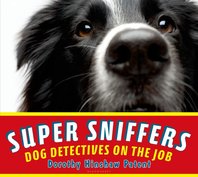 A dog’s nose is 300 times more powerful than a human nose, so it’s no wonder that dogs use their incredibly advanced sense of smell to do some very important jobs. In Super Sniffers, Dorothy Hinshaw Patent explores the various ways specific dogs have put their super sniffing ability to use: from bedbug sniffers to explosive detectors to life-saving allergy detectors . . . and more. This dynamic photo-essay includes first-hand accounts from the people who work closely with these amazing dogs. For more information, click here. Dorothy Hinshaw Patent is a member of iNK's Authors on Call and is available for classroom programs through Field Trip Zoom, a terrific technology that requires only a computer, wifi, and a webcam. Click here to find out more. MLA 8 Citation
Patent, Dorothy Hinshaw. "Smelling Feet or Smelly Feet?" Nonfiction Minute, iNK Think Tank, 23 Jan. 2018, www.nonfictionminute.org/the-nonfiction-minute/ Smelling-Feet-or-Smelly-Feet.
0 Comments
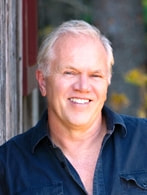 I really like vultures. Sure, they’re ugly and they eat nasty dead things. But those are not necessarily bad characteristics. First let’s deal with “ugly.” Vultures’ bald heads are what make them seem ugly to most people. But think about why they’re bald. Imagine thrusting your head inside the carcass of a white-tailed deer to reach the meat. A feathered head might capture bits of flesh, blood and gore and you end up with a face full bacteria and flies. Scientists believe that one reason vultures have evolved featherless heads is to aid in hygiene. A bald head stays clean and any remaining germs or bacteria are baked off by the sun. Vultures have also found that a bald head can help with temperature regulation. When it gets cold they can tuck their heads down to keep their neck covered with feathers. When it’s hot, vultures can extend their neck to expose bare skin. Their bald heads work so well that I wrote a poem about them. Naked Head It’s best to have no feathers, When you stick your head in guts, That way you don’t go walkin’ round, Your noggin dripping schmutz. Moving on to “eating nasty dead things,” the next time you see vultures eating a dead animal on the side of the road, be thankful! That carcass might be dead from rabies or contaminated with other harmful diseases. Vultures have the amazing ability to consume rotting and diseased flesh and stay healthy. It’s all in the stomach. Vultures possess very powerful stomach acids that destroy most bacteria and deadly viruses. In fact, vulture stomach acid is so strong it can dissolve metal! Except if that metal is lead shot -- many turkey vultures are killed every year by consuming shot that they encounter in dead deer. Vultures are the world’s natural “sanitation workers,” helping to stop the spread of disease. I’m so appreciative of the work they do, I even wrote a poem about eating dead things: Dead Meat I like my meat dead, It’s best if it’s not moving. Don’t want to see one final twitch, I prefer it oozing So, the next time you see a vulture circling in the noonday sky, think about the valuable and important clean up service this bird provides to us and to the environment. Maybe I’ll write a poem about that….  Steve Swinburne is a science writer, but as you can see from this Minute, he likes to write poetry too. In his book Ocean Soup, he offers verses in the voices of tide-pool animals, including the barnacle, sea urchin, sculpin, mussel, starfish, hermit crab, anemone, and lobster. For more about Steve's poetry, click here. Steve Swinburne is a member of iNK's Authors on Call and is available for classroom programs through FieldTripZoom, a terrific technology that requires only a computer, wifi, and a webcam. Click here to find out more. MLA 8 Citation
Swinburne, Stephen R. "In Praise of Vultures." Nonfiction Minute, iNK Think Tank, 8 Dec. 2017, www.nonfictionminute.org/ In-Praise-Of-Vultures. 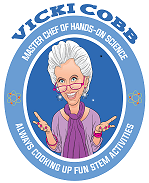 Ever taste a stale potato chip? If not, here’s how to make one:
Take a close look at an opened bag of potato chips. It is foil-lined to make it light proof. An unopened bag is very puffy because it is filled with a gas. This puffiness protects the chips from breaking. But the gas in the bag is not air, which is a mixture of about 20% oxygen and 79% nitrogen. It is air without the oxygen, so it’s mostly nitrogen. You can prove this. Oxygen is needed for fire to burn. If the air around a flame is flooded with nitrogen, the flame goes out. So you can use the gas in a bag of potato chips to put out a candle. Here’s how:
Now go educate some grown-up. 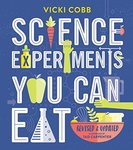 Vicki Cobb’s best known book is Science Experiments You Can Eat. This is the new third revision published in 2016. Vicki Cobb is a member of iNK's Authors on Call and is available for classroom programs through Field Trip Zoom, a terrific technology that requires only a computer, wifi, and a webcam. Click here to find out more. MLA 8 Citation Cobb, Vicki. "How to Extinguish a Fire with a Bag of Potato Chips." Nonfiction Minute, iNK Think Tank, 2 Oct. 2017, www.nonfictionminute.org/the-nonfiction-minute/how-to-extinguish-a-fire-with-a-bag-of-potato-chips. 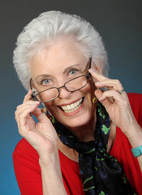
How well do you handle spicy food? Do you find food with a “kick” eye-watering and difficult to swallow? Or are you a real “fire eater;” nothing can be too hot?
A scientist, named Wilbur Scoville, figured out how to rank spicy food for hotness in 1912. The “heat” from peppers comes from a chemical called capsaicin (cap-say-sin). Pure capsaicin registers 16 million heat units on the Scoville scale. Zero is a sweet green, red or yellow pepper. A fresh, green Jalapeño (ha-la-pen-yo) is rated 2,500-8,000 units, a lot less hot than pure capsaicin. The fact is that you don’t “taste” the heat. The sensation of heat comes from nerve endings in your tongue that respond to pain. Of course, these nerve endings are not just in your tongue. They are all over your body. So a good scientific question is: Can you “taste” hot sauce with, say, your wrist? Check it out. Rub the inside of your wrist with a cut Jalapeño pepper or some hot sauce. Wait a few minutes. Feel the burn? Rinse off your wrist well with cool water. Your tongue, of course, is much more sensitive than your wrist to many chemicals because it is always wet. Capsaicin, like a lot of other chemicals dissolves in water and reaches those nerve endings more quickly. Another liquid that triggers your pain nerves in your tongue is soda. The carbon dioxide in the bubbles reacts with an enzyme in your mouth to form a weak chemical called carbonic acid. This acid fires the pain nerve endings in your tongue giving soda its “bite.” How well can you tolerate this pain? Stick your tongue into a freshly opened glass of soda and hold it there. See how long you can keep it in the drink. One minute? Two minutes? Most people can’t last a minute. But maybe you’re tougher than that. Some Mexican parents give their kids mixtures of sugar and red chili powder when they’re little to build up their tolerance for spicy foods. Do you think that people who love spicy food could also be champions at keeping their tongues immersed in soda? Design an experiment to find out at your next party. Hot Stuff from Vicki Cobb on Vimeo. atonguelashing from Vicki Cobb on Vimeo. 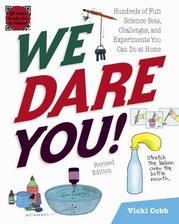
These videos were made from Vicki Cobb’s book We Dare You! She invites you to join her video project and make your own videos from her book and post them on the www.wedareyouvideos.com website. Vicki Cobb is a member of iNK's Authors on Call and is available for classroom programs through Field Trip Zoom, a terrific technology that requires only a computer, wifi, and a webcam. Click here to find out more.
MLA 8 Citation
Cobb, Vicki. "Some Painful Truth." Nonfiction Minute, iNK Think Tank, 17 Oct. 2017, www.nonfictionminute.org/the-nonfiction-minute/some-painful-truth. 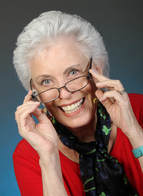  At left in the back is a fresh spinach leaf that has been treated with trehalose, frozen and defrosted.. The droopy one has been frozen and defrosted without trehalose. It's what is giving us hope that we may soon be able to defrost a salad. At left in the back is a fresh spinach leaf that has been treated with trehalose, frozen and defrosted.. The droopy one has been frozen and defrosted without trehalose. It's what is giving us hope that we may soon be able to defrost a salad. When it comes to preserving a fresh taste in food to be eaten at some later time, nothing beats freezing it. That was the discovery made by Clarence Birdseye in 1924. He had been working in northern Canada and noticed that fish caught by the native Canadian Inuits froze almost instantly in the frigid winter air. It was just as delicious when cooked and eaten months later as it was on the day it was fresh. Birdseye figured that if food was frozen quickly at very cold temperatures, large ice crystals couldn’t form to damage the food and make it mushy. His flash-freezing process made him very rich. The problem isn’t so much the freezing of food as what happens when it’s defrosted. See for yourself. Stick a stalk of celery in your freezer. The next day defrost it. Want to eat it? Compare it to a fresh unfrozen stalk. The perky structure of fresh celery is destroyed by ice. Water has the very unusual property of expanding and taking up more space when it changes into ice than when in a liquid state. That’s why ice cubes float and frozen unopened soda cans bulge. Expanding ice crystals destroy the cell walls of plants. Quickly freezing fresh food keeps the ice crystals smaller than slower freezing, but they are still large enough to destroy the cell walls of delicate vegetables like spinach or lettuce. But if you defrost frozen spinach from the supermarket it is beyond limp. So a salad you can defrost and serve as if it were fresh has seemed like an impossible dream. Federico Gomez, a Swedish scientist, is working to change this. Like Birdseye he took a close look at nature, specifically at plants that stay alive in very cold climates. He discovered that they contain a sugar called trehalose (tree-HAL-ose) that works like a natural antifreeze. Could he find a way to get trehalose into spinach leaves? If so, would the trehalose protect the structure of the spinach and keep it crisp after defrosting? This picture shows the results. The leaf on the left was treated with trehalose. The one on the right was untreated. He froze and defrosted both. The treated leaf is as crisp as if it had never been frozen! Just because there is success in a lab doesn’t mean a defrosted salad will show up on your dinner plate any time soon. But these results are enough to keep the research going. Move over Clarence Birdseye!  Cobb has revised her classic book, Science Experiments You Can Eat. While doing her research, she came across this work of Frederico Gomez. She bought trehalose on line and soaked some slices of parsnip and zucchini in a trehalose solution, hoping that the sugar would be absorbed by the plant cells. But when she froze them and defrosted them, it didn't work. Dr. Gomez got the sugar inside the plant cells by removing some water from between the cells in a vacuum chamber, soaking the leaves in a trehalose solution (which moved the sugar into the spaces outside the cells) and then exposing the leaves with a mild electric shock to get the sugar through the cell walls. Vicki didn't have the equipment to do all this but she tried anyway. The book was published in 2016. Vicki Cobb is a member of iNK's Authors on Call and is available for classroom programs through Field Trip Zoom, a terrific technology that requires only a computer, wifi, and a webcam. Click here to find out more. MLA 8 Citation
Cobb, Vicki. "Why You Can't Defrost a Salad...Yet." Nonfiction Minute, iNK Think Tank, 11 01 2018, www.nonfictionminute.org/the-nonfiction-minute/ Why-You-Can't-Defrost-a-Salad-Yet. |
*NEWS
|
For Vicki Cobb's BLOG (nonfiction book reviews, info on education, more), click here: Vicki's Blog
The NCSS-CBC Notable Social Studies Committee is pleased to inform you
that 30 People Who Changed the World has been selected for Notable Social Studies Trade Books for Young People 2018, a cooperative project of the National Council for the Social Studies (NCSS) & the Children’s Book Council
Categories
All
Abolitionists
Adams Janus
Adaptation
Adaptations
Adkins Jan
Advertising
Aerodynamics
Africa
African American History
African Americans
Africa West
Agriculture
Aircraft
Air Pilots
Air Pressure
Air Travel
Albee Sarah
Alchemy
Alligators
Allusion
American History
American Icons
Amphibians
Amundsen Roald
Anatomy
Ancient
Ancient Cultures
Anderson Marian 1897-1993
Animal Behavior
Animal Experimentation
Animal Intelligence
Animals
Animation
Antarctica
Ants
Apache Indians
Apes
April Fool's Day
Architecture
Argument
Arithmetic
Art
Art Deco
Artists
Arts
Asia
Astronauts
Astronomy
Athletes
Atomic Theory
Audubon Societies
Authors
Autobiography
Automobiles
Aviation
Awards
Bacteria
Baseball
Battuta Ibn
Bears
Beatles
Beavers
Bees
Biodegradation
Biography
Biology
Biomes
Biomimicry
Biplanes
Birds
Black Death
Black History
Blindness
Blizzards
Bombs
Bonaparte Napoleon
Boone Daniel
Botany
Brazil
Bridges
Brill Marlene Targ
Brooklyn Bridge
Brown John
Buffaloes
Building Materials
Butterflies
Caesar
Caesar Julius
Caissons
Calculus
Calendars
Cannibal
Capitals
Caravaggio
Carbon Dioxide
Carnivores
Carson Mary Kay
Cartoons & Comics
Carving (Decorative Arts)
Cascade Range
Castaldo Nancy
Castles
Castrovilla Selene
Cathedrals
Cats
Caves
Celts
Cemeteries
Chemistry
Children's Authors
Child Welfare
China
Choctaw Indians
Christmas
Chronometers
Cicadas
Cinco De Mayo
Ciphers
Circle
Citizenship
Civil Rights
Civil Rights Movements
Civil War
Civil War - US
Climate
Climate Change
Clocks And Watches
Clouds
Cobb Vicki
COBOL (Computer Language)
Code And Cipher Stories
Collard III Sneed B.
Collectors And Collecting
Color
Commerce
Communication
Competition
Compilers
Composers
Computers
Congressional Gold Medal
Consitution
Contests
Contraltos
Coolidge Calvin
Cooling
Corms
Corn
Counterfeiters
Covid-19
Crocodiles
Cryptography
Culture
Darwin Charles
Declaration Of Independence
Decomposition
Decompression Sickness
Deep-sea Animals
Deer
De Medici Catherine
Design
Detectives
Dickens Charles
Disasters
Discrimination
Diseases
Disney Walt
DNA
Dogs
Dollar
Dolphins
Douglass Frederick 1818-1895
Droughts
Dr. Suess
Dunphy Madeleine
Ear
Earth
Earthquakes
Ecology
Economics
Ecosystem
Edison Thomas A
Education
Egypt
Eiffel-gustave-18321923
Eiffel-tower
Einstein-albert
Elephants
Elk
Emancipationproclamation
Endangered Species
Endangered-species
Energy
Engineering
England
Englishlanguage-arts
Entomology
Environmental-protection
Environmental-science
Equinox
Erie-canal
Etymology
Europe
European-history
Evolution
Experiments
Explorers
Explosions
Exports
Extinction
Extinction-biology
Eye
Fairs
Fawkes-guy
Federalgovernment
Film
Fires
Fishes
Flight
Floods
Flowers
Flute
Food
Food-chains
Foodpreservation
Foodsupply
Food-supply
Football
Forceandenergy
Force-and-energy
Forensicscienceandmedicine
Forensic Science And Medicine
Fossils
Foundlings
France
Francoprussian-war
Freedom
Freedomofspeech
French-revolution
Friction
Frogs
Frontier
Frontier-and-pioneer-life
Frozenfoods
Fugitiveslaves
Fultonrobert
Galapagos-islands
Galleys
Gametheory
Gaudi-antoni-18521926
Gender
Generals
Genes
Genetics
Geography
Geology
Geometry
Geysers
Ghosts
Giraffe
Glaciers
Glaucoma
Gliders-aeronautics
Global-warming
Gods-goddesses
Gold-mines-and-mining
Government
Grant-ulysses-s
Grasshoppers
Gravity
Great-britain
Great-depression
Greece
Greek-letters
Greenberg Jan
Hair
Halloween
Handel-george-frederic
Harness Cheryl
Harrison-john-16931776
Health-wellness
Hearing
Hearing-aids
Hearst-william-randolph
Henry-iv-king-of-england
Herbivores
Hip Hop
History
History-19th-century
History-france
History-world
Hitler-adolph
Hoaxes
Holidays
Hollihan Kerrie Logan
Homestead-law
Hopper-grace
Horses
Hot Air Balloons
Hot-air-balloons
Housing
Huguenots
Human Body
Hurricanes
Ice
Icebergs
Illustration
Imagery
Imhotep
Imperialism
Indian-code-talkers
Indonesia
Industrialization
Industrial-revolution
Inquisition
Insects
Insulation
Intelligence
Interstatecommerce
Interviewing
Inventions
Inventors
Irrational-numbers
Irrigation
Islands
Jacksonandrew
Jazz
Jeffersonthomas
Jefferson-thomas
Jemisonmae
Jenkins-steve
Jet-stream
Johnsonlyndonb
Jokes
Journalism
Keeling-charles-d
Kennedyjohnf
Kenya
Kidnapping
Kingmartinlutherjr19291968
Kingmartinlutherjr19291968d6528702d6
Kings-and-rulers
Kings Queens
Kings-queens
Koala
Labor
Labor Policy
Lafayette Marie Joseph Paul Yves Roch Gilbert Du Motier Marquis De 17571834
Landscapes
Languages-and-culture
Law-enforcement
Layfayette
Levers
Levinson Cynthia
Lewis And Clark Expedition (1804-1806)
Lewis Edmonia
Liberty
Lift (Aerodynamics)
Light
Lindbergh Charles
Liszt Franz
Literary Devices
Literature
Lizards
Longitude
Louis XIV King Of France
Lumber
Lunar Calendar
Lynching
Macaws
Madison-dolley
Madison-james
Madison-james
Mammals
Maneta-norman
Maneta-norman
Marathon-greece
Marine-biology
Marine-biology
Marines
Marsupials
Martial-arts
Marx-trish
Mass
Massachusetts-maritime-academy
Mass-media
Mastodons
Mathematics
May-day
Mcclafferty-carla-killough
Mcclafferty-carla-killough
Mckinley-william
Measurement
Mechanics
Media-literacy
Media-literacy
Medicine
Memoir
Memorial-day
Metaphor
Meteorology
Mexico
Mickey-mouse
Microscopy
Middle-west
Migration
Military
Miners
Mississippi
Molasses
Monarchy
Monsters
Montgomery
Montgomery-bus-boycott-19551956
Montgomery-heather-l
Monuments
Moon
Moran-thomas
Morsecode
Morsesamuel
Moss-marissa
Moss-marissa
Motion
Motion-pictures
Mummies
Munro-roxie
Munro-roxie
Musclestrength
Museums
Music
Muslims
Mythologygreek
Nanofibers
Nanotechnology
Nathan-amy
Nathan-amy
Nationalfootballleague
Nationalparksandreserves
Nativeamericans
Native-americans
Native-americans
Naturalhistory
Naturalists
Nature
Nauticalcharts
Nauticalinstruments
Navajoindians
Navigation
Navy
Ncaafootball
Nervoussystem
Newdeal19331939
Newman-aline
Newman-aline
Newton-isaac
New-york-city
Nobelprizewinners
Nomads
Nonfictionnarrative
Nutrition
Nylon
Nymphs-insects
Oaths Of Office
Occupations
Ocean
Ocean-liners
Olympics
Omnivores
Optics
Origami
Origin
Orphans
Ottomanempire
Painters
Painting
Paleontology
Pandemic
Paper-airplanes
Parksrosa19132005
Parrots
Passiveresistance
Patent Dorothy Hinshaw
Peerreview
Penguins
Persistence
Personalnarrative
Personification
Pets
Photography
Physics
Pi
Pigeons
Pilots
Pinkertonallan
Pirates
Plague
Plains
Plainsindians
Planets
Plantbreeding
Plants
Plastics
Poaching
Poetry
Poisons
Poland
Police
Political-parties
Pollen
Pollution
Polo-marco
Populism
Portraits
Predation
Predators
Presidentialmedaloffreedom
Presidents
Prey
Prey-predators
Prey-predators
Prime-meridian
Pringle Laurence
Prohibition
Proteins
Protestandsocialmovements
Protestants
Protestsongs
Punishment
Pyramids
Questioning
Radio
Railroad
Rainforests
Rappaport-doreen
Ratio
Reading
Realism
Recipes
Recycling
Refrigerators
Reich-susanna
Religion
Renaissance
Reproduction
Reptiles
Reservoirs
Rheumatoidarthritis
Rhythm-and-blues-music
Rice
Rivers
Roaringtwenties
Roosevelteleanor
Rooseveltfranklind
Roosevelt-franklin-d
Roosevelt-theodore
Running
Russia
Safety
Sanitation
Schwartz David M
Science
Scientificmethod
Scientists
Scottrobert
Sculpture
Sculpturegardens
Sea-level
Seals
Seals-animals
Secretariesofstate
Secretservice
Seeds
Segregation
Segregationineducation
Sensessensation
September11terroristattacks2001
Seuss
Sextant
Shackletonernest
Shawneeindians
Ships
Shortstories
Silkworms
Simple-machines
Singers
Siy Alexandra
Slavery
Smuggling
Snakes
Socialchange
Social-change
Socialjustice
Social-justice
Socialstudies
Social-studies
Social-studies
Sodhouses
Solarsystem
Sound
Southeast-asia
Soybean
Space Travelers
Spain
Speech
Speed
Spiders
Spies
Spiritualssongs
Sports
Sports-history
Sports-science
Spring
Squirrels
Statue-of-liberty
STEM
Storms
Strategy
Sugar
Sumatra
Summer
Superbowl
Surgery
Survival
Swanson-jennifer
Swinburne Stephen R.
Synthetic-drugs
Taiwan
Tardigrada
Tasmania
Tasmanian Devil
Tasmanian-devil
Technology
Tecumsehshawneechief
Telegraph-wireless
Temperature
Tennis
Terrorism
Thomas Peggy
Thompson Laurie Ann
Time
Titanic
Tombs
Tortoises
Towle Sarah
Transcontinental-flights
Transportation
Travel
Trees
Trung Sisters Rebellion
Tundra
Turnips
Turtles
Typhoons
Underground Railroad
Us-environmental-protection-agency
Us History
Us-history
Ushistoryrevolution
Us History Revolution
Us-history-war-of-1812
Us Presidents
Ussupremecourtlandmarkcases
Vacations
Vaccines
Vangoghvincent
Vegetables
Venom
Vietnam
Viruses
Visual-literacy
Volcanoes
Voting-rghts
War
Warne-kate
Warren Andrea
Washington-dc
Washington George
Water
Water-currents
Wax-figures
Weapons
Weather
Weatherford Carole Boston
Whiting Jim
Wildfires
Winds
Windsor-castle
Wolves
Woman In History
Women
Women Airforce Service Pilots
Women-airforce-service-pilots
Womeninhistory
Women In History
Women-in-science
Women's History
Womens-roles-through-history
Wonder
Woodson-carter-godwin-18751950
World-war-i
World War Ii
World-war-ii
Wright Brothers
Writing
Writing-skills
Wwi
Xrays
Yellowstone-national-park
Zaunders Bo
ArchivesMarch 2021
February 2021
January 2021
December 2020
November 2020
October 2020
September 2020
June 2020
May 2020
April 2020
March 2020
February 2020
January 2020
December 2019
October 2019
September 2019
August 2019
July 2019
May 2019
April 2019
March 2019
February 2019
January 2019
December 2018
November 2018
September 2018
June 2018
May 2018
April 2018
March 2018
February 2018
January 2018
December 2017
November 2017
October 2017
September 2017
March 2017
The NONFICTION MINUTE, Authors on Call, and. the iNK Books & Media Store are divisions of iNK THINK TANK INC.
a 501 (c) (3) nonprofit corporation. To return to the iNK Think Tank landing page click the icon or the link below. :
http://inkthinktank.org/
For more information or support, contact thoughts@inkthinktank.org
For Privacy Policy, go to
Privacy Policy
© COPYRIGHT the Nonfiction Minute 2020.
ALL RIGHTS RESERVED.
This site uses cookies to personalize your experience, analyze site usage, and offer tailored promotions. www.youronlinechoices.eu
Remind me later
Archives
March 2023
February 2023
January 2023
December 2022
November 2022
October 2022
September 2022
June 2022
May 2022
April 2022
March 2022
February 2022
January 2022
December 2021
November 2021
September 2021
April 2021
March 2021
February 2021
November 2020
October 2020
September 2020
June 2020
May 2020
April 2020
March 2020
February 2020
January 2020
October 2019
August 2019
July 2019
May 2019
April 2019
December 2018
September 2018
June 2018
May 2018
March 2018
February 2018
January 2018
December 2017
November 2017
October 2017
September 2017


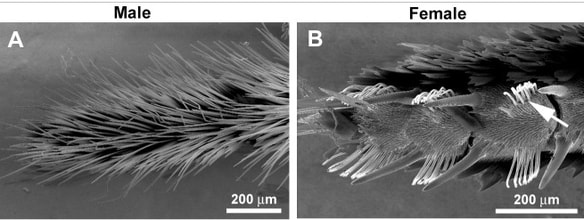
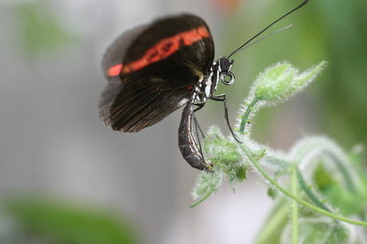
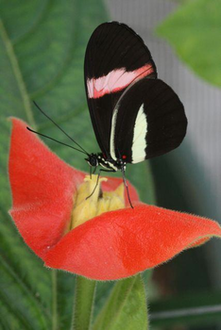


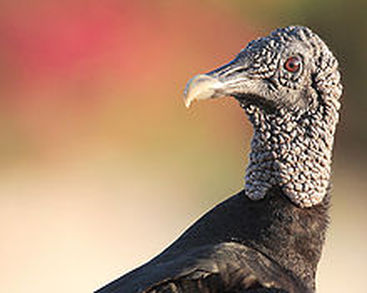

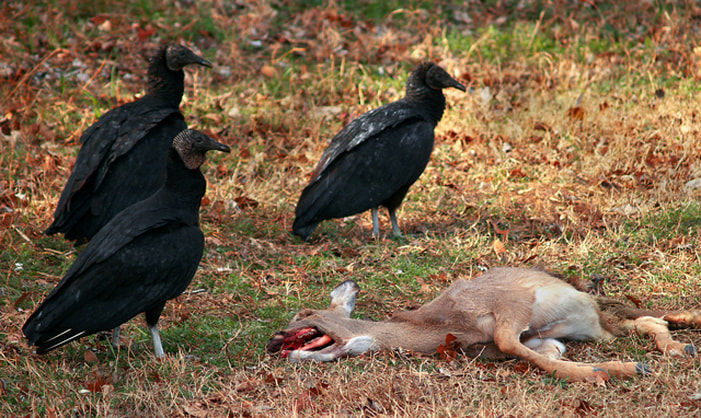


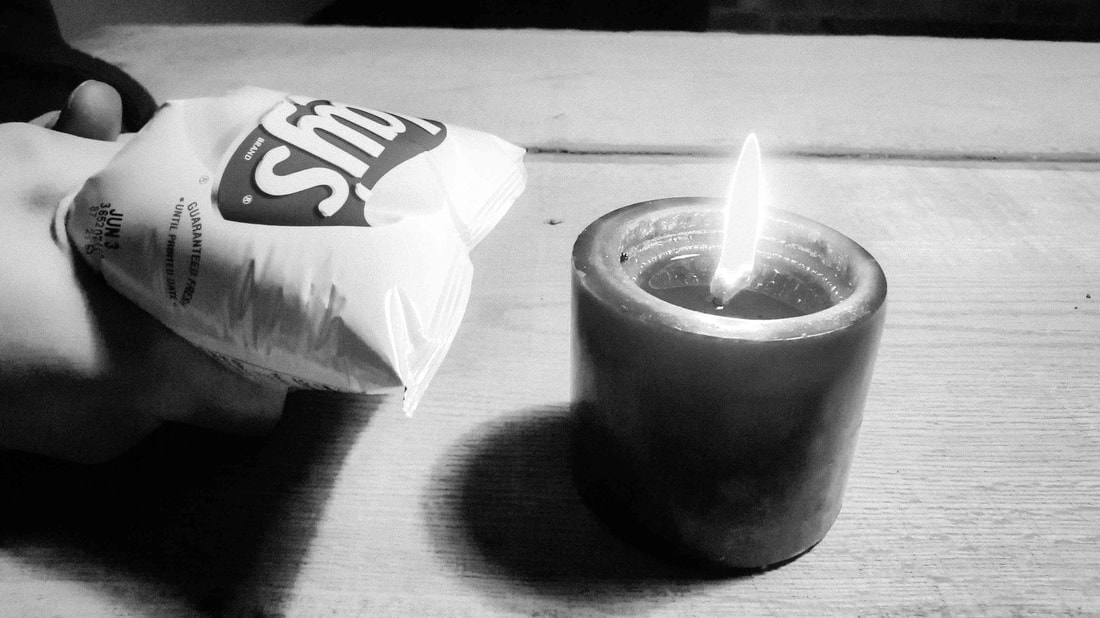





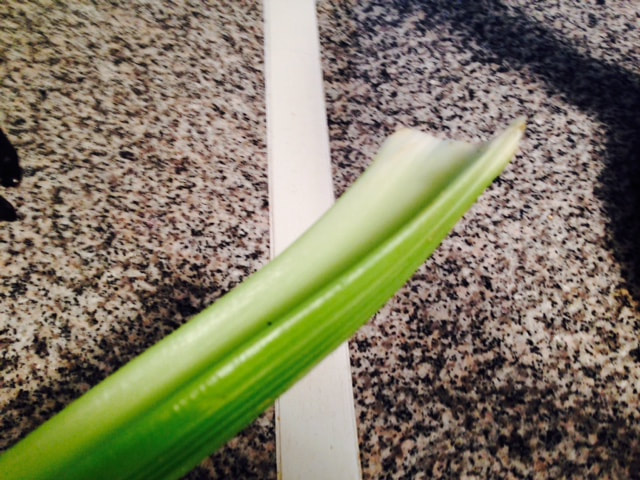
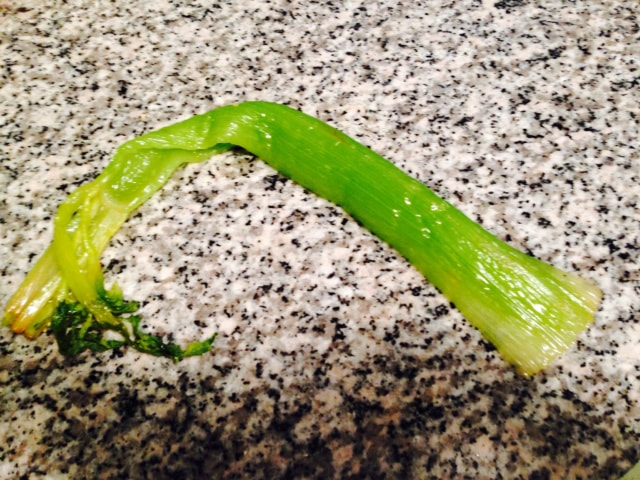

 RSS Feed
RSS Feed
